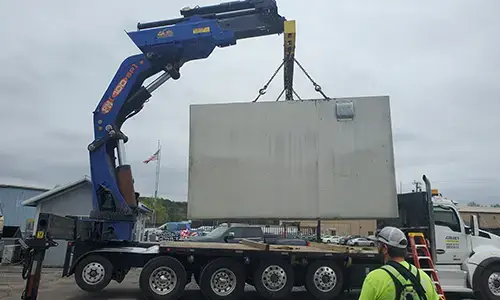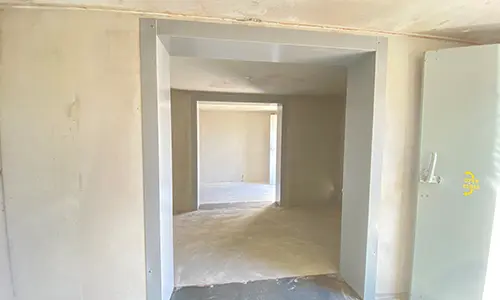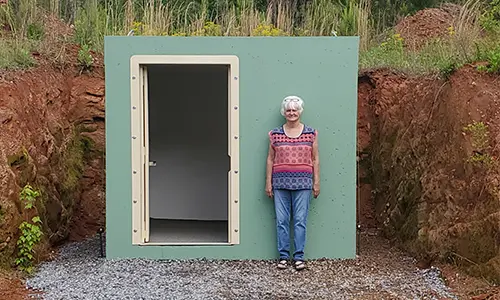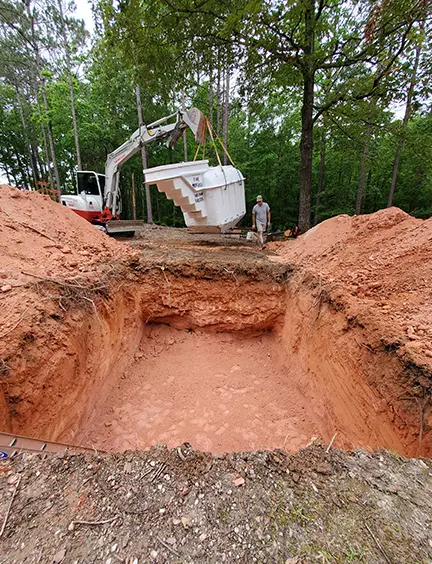What Is a Tornado Shelter? Lifesaving Storm Protection in Alabama

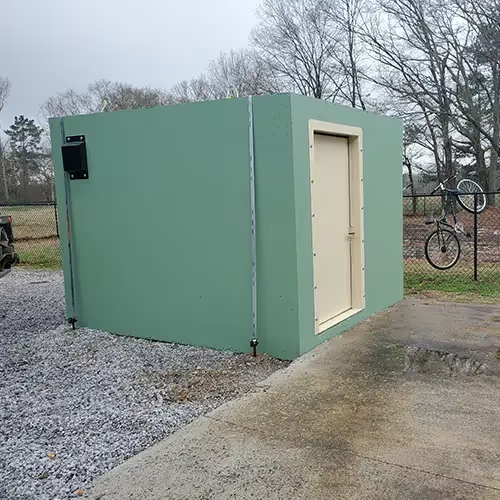
Every year, powerful tornadoes carve paths of destruction across the United States, especially throughout the Deep South and Tornado Alley. Alabama consistently ranks among the states most affected by tornado activity, with severe storms capable of reaching EF4 or EF5 intensity. For residents, preparation isn’t optional: it’s essential.
A tornado shelter can mean the difference between life and death when these storms strike. But what is a tornado shelter, and how does it protect you?
In this guide, you’ll learn what a tornado shelter is, how it’s designed to withstand extreme weather, and why investing in one is one of the smartest safety decisions for Alabama homeowners. You’ll also explore the different types of shelters, how they work, and expert advice for choosing the right model for your family
What Is a Tornado Shelter and Why It Matters
A tornado shelter is a specially constructed safe space designed to protect occupants from the destructive forces of tornadoes and severe storms. These shelters are engineered to withstand extreme winds, flying debris, and even structural collapse, providing near-absolute protection during the most violent EF5 tornadoes.
Key Characteristics of a Tornado Shelter
- Reinforced Structure: Built with concrete, steel, or fiberglass to resist wind speeds exceeding 250 mph.
- Anchoring Systems: Firmly secured to the ground or foundation to prevent uplift.
- Impact Resistance: Tested to endure debris traveling over 100 mph.
- Ventilation & Access: Equipped with vents for airflow and durable tornado shelter doors that remain functional under pressure.
Why Tornado Shelters Are Essential in Alabama
Alabama’s geography makes it particularly prone to long-track tornadoes, often occurring at night when visibility and warning times are limited. Traditional basements or closets may not provide enough protection from these powerful storms.
That’s where FEMA-approved tornado shelters come in. These models meet rigorous safety standards, ensuring families have a reliable refuge during unpredictable and fast-moving weather events. Homeowners can explore certified options on the safe rooms page to find designs tailored for Alabama conditions.
In short, a tornado shelter isn’t just an accessory—it’s an investment in life safety, especially in tornado-prone regions like Alabama.
Types of Tornado Shelters and How They Work
When researching what is a tornado shelter, it’s important to understand that no single design fits every home. The right model depends on your location, available space, and your family’s needs. Below are the most common types of tornado shelters for homes in Alabama.
1. Underground Tornado Shelters
An underground tornado shelter is the traditional and most recognized type. Installed below ground, it offers maximum protection from wind and flying debris.
Advantages:
- Naturally shielded from wind pressure and debris impact.
- Can be installed under a garage floor, in the backyard, or beneath new construction foundations.
- Stays cooler in warm months for comfortable short-term use.
Considerations:
- Requires excavation and proper drainage.
- May not suit flood-prone areas.
How It Works:
The tornado shelter underground design leverages the earth’s density as a natural barrier. Reinforced steel or concrete walls prevent collapse, while heavy-duty tornado shelter doors and ventilation systems maintain airflow and accessibility. You can view various underground storm shelter models available for Alabama homes.
2. Above-Ground Safe Rooms
Above-ground tornado shelters have gained popularity for their ease of installation and accessibility—ideal for older adults and families with mobility challenges.
Advantages:
- Can be installed in garages, basements, or interior rooms.
- FEMA-approved models resist EF5 tornado forces.
- ADA-compliant options available.
Considerations:
- Requires secure anchoring to prevent uplift.
- May reduce interior space slightly.
How It Works:
These shelters are built from reinforced concrete or heavy-gauge steel and bolted securely to the home’s slab. Their doors are impact-tested to withstand debris from EF5-level winds. You can explore various above-ground shelter options or view the unpainted concrete storm shelter model for durable and cost-effective protection.
3. Community and Commercial Tornado Shelters
Community shelters are designed for schools, offices, and neighborhoods, offering large-capacity protection during severe weather events.
Advantages:
- Can house dozens or even hundreds of people.
- Professionally engineered with emergency lighting and power systems.
- Serve dual purposes (e.g., meeting rooms or storage spaces).
Considerations:
- Higher initial tornado shelter cost.
- Requires emergency coordination plans.
To learn more about Alabama’s large-scale storm safety facilities, visit the community shelters section.
4. Modular and Prefabricated Units
Prefabricated tornado shelters arrive prebuilt and are installed quickly—often within a day—while meeting FEMA P-320 and ICC-500 safety standards.
Advantages:
- Affordable and efficient installation.
- Available in customizable finishes and sizes.
- Portable models allow relocation if you move homes.
Considerations:
- Must still meet certification and proper installation standards.
For homeowners comparing tornado shelter prices, prefab units offer an excellent balance of affordability and reliability.
5. Garage and Backyard Shelters
Garage and backyard tornado shelters are especially popular in Alabama. Garage shelters are installed beneath concrete slabs, while backyard models can be partially buried or freestanding.
Advantages:
- Easy access during emergencies.
- Keeps home interiors uncluttered.
- Blends seamlessly into landscaping for a fancy tornado shelter inside aesthetic.
No matter which option you choose—underground, above-ground, or modular—the goal is the same: to create a reliable, tested refuge capable of surviving the strongest storms nature can unleash.
Real-World Tornado Shelter Applications in Alabama
Alabama’s tornado history underscores the importance of preparedness. The 2011 Super Outbreak alone claimed over 250 lives in the state. Since then, thousands of residents have invested in tornado shelters as part of their home safety plans.
Example 1: Rural Home Installations
Many Alabama families now include underground tornado shelters in new home construction. Installed beneath garages, these shelters offer immediate access when every second counts.
Example 2: Schools and Community Centers
Several Alabama school districts have built community tornado shelters, providing safe refuge for students and staff during severe weather. These shelters often double as multi-use rooms when not in use.
Example 3: Retrofitting Older Homes
Even homes without basements can add safety with above-ground tornado shelters. Homeowners can find locally built solutions that integrate seamlessly with older structures in the Alabama storm shelter updates section.
Expert Tips for Choosing and Maintaining a Tornado Shelter
Selecting the right shelter goes beyond design—it’s about ensuring reliability, certification, and accessibility.
- Verify Certification: Choose shelters that meet FEMA P-320/P-361 and ICC-500 standards for tested protection.
- Ensure Accessibility: Your shelter should be reachable within seconds, without needing to go outdoors.
- Size Accordingly: Plan at least 6 sq. ft. per person, with room for pets, supplies, and medical devices.
- Stock Essential Supplies: Include water, flashlights, first-aid kits, and communication tools.
- Schedule Annual Inspections: Check seals, bolts, and ventilation systems before storm season.
- Consult Local Experts: Alabama-based professionals understand the state’s soil, building codes, and weather patterns—ensuring each installation is both safe and compliant.
Conclusion: Protecting What Matters Most
When it comes to tornadoes, you can’t control the storm—but you can control your preparation. A tornado shelter provides more than protection: it offers peace of mind, knowing your family has a secure refuge when it matters most.
For Alabama residents, understanding what a tornado shelter is and how it works is the first step toward safety. Whether you choose an underground, above-ground, or custom-built design, investing in a certified shelter is an act of foresight that could save lives.
Residents can explore safe room solutions and installation services tailored to Alabama homes at Lake Martin Storm Shelters.
Frequently Asked Questions (FAQs)
1. What is a tornado shelter?
A tornado shelter is a reinforced space designed to protect people from extreme winds and flying debris during tornadoes.
2. How long should I stay in a tornado shelter?
Stay inside until official sources like NOAA or Weather.gov declare the warning over.
3. Can above-ground shelters really withstand EF5 tornadoes?
Yes. FEMA- and ICC-certified above-ground tornado shelters are engineered to survive EF5 wind speeds.
4. How many people can fit in a typical tornado shelter?
Residential shelters typically hold 4–10 people, depending on model and design.
5. Do tornado shelters increase home value?
Absolutely. In Alabama and other tornado-prone states, a certified shelter boosts both safety and property value.

